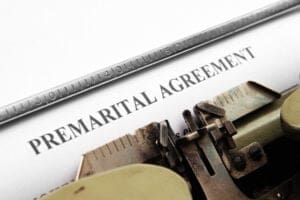Understanding Bankruptcy Options: A Comprehensive Guide to Financial Relief Through Federal Law
Individuals facing overwhelming debt frequently ask, “What are my bankruptcy options and how can I get the fresh start I need?” The answer depends on various factors including income, debt types, and individual circumstances. Bankruptcy options under federal law provide several pathways to debt relief, each designed to address different financial situations while preserving essential constitutional protections.
What Are the Primary Bankruptcy Options Available?
The United States Bankruptcy Code offers multiple chapters of bankruptcy that serve different purposes and eligibility requirements. Understanding these options is crucial for anyone considering debt relief through the federal court system.
Chapter 7: Liquidation Bankruptcy
Chapter 7 bankruptcy, commonly known as liquidation bankruptcy, represents the most straightforward form of debt relief available to individuals and businesses. This option allows debtors to discharge most unsecured debts within four to six months while retaining essential assets through bankruptcy exemptions.
The process begins with filing a petition in the appropriate bankruptcy court, triggering the automatic stay that immediately halts most collection activities. A court-appointed trustee then reviews the debtor’s financial situation and may liquidate non-exempt assets to pay creditors. However, many Chapter 7 cases are “no-asset” proceedings where debtors keep all their property due to exemption protections.
To qualify for Chapter 7, debtors must pass the means test, which compares their income to state median levels. Those with income below the median automatically qualify, while higher-income individuals must demonstrate through detailed calculations that they lack sufficient disposable income to repay debts.
Chapter 13: Reorganization for Individuals
Chapter 13 bankruptcy provides a reorganization option for individuals with regular income who wish to keep their assets while repaying debts over three to five years. This “wage earner’s plan” allows debtors to propose a repayment schedule that addresses secured debts like mortgages while potentially reducing unsecured obligations.
The Chapter 13 process requires court approval of a repayment plan that demonstrates the debtor’s ability to make regular payments to creditors. Unlike Chapter 7, debtors retain their property but must commit all disposable income to the plan. This option particularly benefits homeowners facing foreclosure, as it allows them to cure mortgage arrearages over time while maintaining possession of their property.
Chapter 11: Business Reorganization
Chapter 11 bankruptcy primarily serves businesses seeking to reorganize their operations and debts while continuing operations. This complex proceeding allows companies to modify contracts, reject leases, and restructure financial obligations under court supervision.
Recent amendments include a streamlined Subchapter V process for small businesses, which provides expedited procedures and reduced administrative costs. The debtor typically remains in possession of assets and operations, though the court may appoint a trustee in cases involving fraud or mismanagement.
Chapter 12: Family Farmer and Fisherman Relief
Chapter 12 bankruptcy addresses the unique financial challenges faced by family farmers and fishermen. This specialized chapter combines elements of Chapter 13 reorganization with recognition of the seasonal and cyclical nature of agricultural and fishing income.
Eligibility requires that at least 50% of the debtor’s income derive from farming or fishing operations, with specific debt limits that reflect the capital-intensive nature of these industries. The repayment plan must span three to five years and account for the irregular income patterns typical in these sectors.
Chapter 9: Municipal Bankruptcy
Chapter 9 bankruptcy provides debt relief exclusively for municipalities, including cities, counties, school districts, and other governmental entities. This specialized proceeding recognizes the unique constitutional constraints imposed by the Tenth Amendment regarding state sovereignty.
Unlike other bankruptcy chapters, Chapter 9 does not permit asset liquidation due to constitutional limitations. Instead, municipalities negotiate debt adjustments with creditors while maintaining essential public services. State authorization is required before a municipality can file for Chapter 9 relief.
How Does the Means Test Determine Bankruptcy Eligibility?
The means test serves as the primary gatekeeper for Chapter 7 bankruptcy eligibility, designed to ensure that only those truly unable to repay debts receive complete debt discharge. This test, implemented as part of the 2005 Bankruptcy Abuse Prevention and Consumer Protection Act, fundamentally changed bankruptcy access.
Understanding the Two-Step Process
The means test operates through a two-step analysis that first compares the debtor’s income to state median levels, then calculates disposable income after allowed expenses. Debtors with income below the state median automatically pass the first step and qualify for Chapter 7.
For above-median income debtors, the second step requires detailed calculations of allowable expenses based on IRS standards and actual necessary costs. If the resulting disposable income exceeds specific thresholds, the debtor faces a presumption of abuse and must file under Chapter 13 instead.
Constitutional Considerations and Due Process
The means test raises important constitutional questions regarding due process and equal protection under the law. The test applies uniformly across the nation while acknowledging state-specific variations in living costs and exemption levels. This balance reflects the constitutional requirement for uniform bankruptcy laws while respecting state sovereignty over property rights.
What Property Can Be Protected Through Bankruptcy Exemptions?
Bankruptcy exemptions represent one of the most crucial aspects of the debt relief process, determining which assets debtors can retain while obtaining a fresh start. The exemption system reflects a fundamental policy balance between creditor recovery and debtor rehabilitation.
Federal vs. State Exemption Systems
The bankruptcy system allows states to choose between federal exemptions and their own state-specific alternatives. Approximately nineteen states plus the District of Columbia permit debtors to choose between federal and state exemptions, while others require use of state exemptions exclusively.
Federal exemptions include protection for homestead equity up to $31,575, motor vehicles up to $4,450, and various personal property categories. The federal system also provides a wildcard exemption that can protect any property, offering flexibility for debtors with unique asset portfolios.
State Exemption Variations
State exemption laws vary dramatically, with some states providing generous homestead protections while others focus on personal property. This variation reflects different state policies regarding debtor protection and economic development priorities.
Texas and Florida, for example, offer unlimited homestead exemptions, while other states cap protection at modest levels. These differences can significantly impact bankruptcy strategy and may influence where individuals choose to establish residency before filing.
How Does the Automatic Stay Provide Immediate Relief?
The automatic stay represents one of bankruptcy’s most powerful debtor protections, immediately halting most collection activities upon filing. This broad injunction reflects the constitutional principle that bankruptcy provides a breathing space for honest debtors to reorganize their affairs.
Scope of Automatic Stay Protection
The automatic stay prevents creditors from pursuing collection actions, continuing lawsuits, foreclosing on property, or repossessing assets. This protection extends to utility disconnections, wage garnishments, and most other creditor remedies.
However, the stay does not apply to certain actions, including criminal proceedings, domestic support obligations, and some governmental regulatory actions. Understanding these limitations is crucial for debtors seeking comprehensive protection.
Violations and Enforcement
Creditors who violate the automatic stay face potential sanctions, including damages and attorney fees. The bankruptcy court has inherent power to enforce the stay and punish violations, whether intentional or inadvertent.
What Debts Cannot Be Discharged in Bankruptcy?
Non-dischargeable debts represent significant limitations on bankruptcy relief, reflecting congressional policy decisions about obligations that should survive the debt relief process. These exceptions protect important public interests while preserving the integrity of the bankruptcy system.
Priority Non-Dischargeable Debts
Certain debts are automatically non-dischargeable, including tax obligations, domestic support obligations, and student loans. These debts reflect strong public policy interests that Congress determined should not be eliminated through bankruptcy.
Student loans present particular challenges, as they are generally non-dischargeable absent a showing of “undue hardship” through the demanding Brunner test. This standard requires proof that the debtor cannot maintain a minimal standard of living while repaying loans, that the situation is likely to persist, and that the debtor has made good faith efforts to repay.
Debts Requiring Creditor Action
Other debts become non-dischargeable only if creditors successfully object within specific time limits. These include debts arising from fraud, willful injury, or breach of fiduciary duty. Creditors must file complaints within 60 days of the first creditors’ meeting to preserve these objections.
What Are the Alternatives to Bankruptcy?
Bankruptcy alternatives may provide debt relief without the long-term credit consequences of formal bankruptcy proceedings. These options deserve careful consideration, particularly for debtors with stable income and manageable debt levels.
Debt Consolidation
Debt consolidation involves combining multiple debts into a single loan, potentially at lower interest rates. This approach works best for debtors with good credit and stable income who can qualify for favorable loan terms.
The key advantage of consolidation is simplified payment management and potentially reduced overall interest costs. However, consolidation merely restructures debt rather than reducing the principal amount owed.
Debt Settlement
Debt settlement involves negotiating with creditors to accept less than the full amount owed. This approach can provide significant debt reduction but typically requires a lump sum payment or short-term payment plan.
Settlement negotiations may damage credit ratings and result in taxable income for forgiven amounts. However, successful settlements can provide substantial debt relief without formal bankruptcy proceedings.
Credit Counseling Services
Credit counseling provides professional guidance on budgeting, debt management, and financial planning. Nonprofit credit counseling agencies can help debtors develop realistic repayment plans and negotiate with creditors.
Credit counseling is actually required before filing bankruptcy, reflecting congressional recognition of its value in addressing financial distress. Many debtors find that counseling provides sufficient guidance to avoid bankruptcy altogether.
What Role Do Bankruptcy Trustees Play?
Bankruptcy trustees serve as neutral parties responsible for administering bankruptcy estates and ensuring compliance with federal law. These court-appointed officials balance the interests of debtors, creditors, and the public in bankruptcy proceedings.
Chapter 7 Trustee Duties
In Chapter 7 cases, trustees review petitions, verify information, and liquidate non-exempt assets for creditor benefit. They conduct the mandatory creditors’ meeting and investigate potential fraudulent transfers or concealed assets.
The trustee’s primary obligation is to maximize estate value while ensuring fair distribution to creditors according to legal priorities. This includes challenging inappropriate exemptions and pursuing assets that rightfully belong to the estate.
Chapter 13 Trustee Functions
Chapter 13 trustees focus on plan administration, collecting debtor payments and distributing them to creditors according to court-approved terms. They monitor plan compliance and recommend modifications when circumstances change.
These trustees serve as intermediaries between debtors and creditors, ensuring that repayment plans remain feasible while protecting creditor interests. Their ongoing involvement throughout the three-to-five-year plan period makes them crucial to Chapter 13 success.
How Has Recent Reform Affected Bankruptcy Law?
The Bankruptcy Abuse Prevention and Consumer Protection Act of 2005 fundamentally transformed American bankruptcy law, making filing more difficult and expensive while strengthening creditor protections. This comprehensive reform reflected congressional concern about rising bankruptcy rates during periods of economic prosperity.
Key Reform Provisions
The 2005 Act introduced the means test, mandatory credit counseling, and enhanced disclosure requirements. These provisions aimed to direct higher-income debtors toward Chapter 13 repayment plans rather than Chapter 7 liquidation.
Additionally, the Act made Chapter 12 permanent for family farmers and fishermen while adding new protections for financial market contracts. These changes reflected recognition of agriculture’s unique challenges and the need for financial market stability.
Impact on Bankruptcy Practice
Post-2005 reforms significantly increased bankruptcy complexity and costs, requiring debtors to complete credit counseling before filing and financial education before discharge. These requirements reflect congressional emphasis on financial literacy and responsible debt management.
The reforms also strengthened asset protection for retirement accounts and homestead exemptions in certain circumstances. However, they limited strategic planning opportunities and increased the importance of proper timing in bankruptcy filings.
What Constitutional Protections Apply to Bankruptcy?
Constitutional protections in bankruptcy reflect the framers’ recognition that financial distress requires special federal intervention. Article I, Section 8, Clause 4 grants Congress exclusive power to establish “uniform Laws on the subject of Bankruptcies throughout the United States”.
Bankruptcy Clause Interpretation
The Supreme Court has consistently interpreted the Bankruptcy Clause broadly, allowing Congress considerable discretion in designing debt relief systems. This “bankruptcy exceptionalism” permits departures from normal constitutional rules when necessary to accommodate financial distress.
However, the Fifth Amendment’s Takings Clause does not significantly limit bankruptcy legislation, as the Court recognizes that creditor expectations are subject to Congress’s bankruptcy power. This balance protects the integrity of bankruptcy relief while respecting property rights.
Due Process Considerations
Due process requirements in bankruptcy ensure fair treatment of all parties while recognizing the special nature of financial distress proceedings. The automatic stay, discharge injunction, and other bankruptcy protections reflect constitutional principles of fairness and equal treatment.
Conclusion
Understanding bankruptcy options requires careful analysis of individual circumstances, debt types, and long-term financial goals. The federal bankruptcy system provides multiple pathways to debt relief, each with distinct advantages and limitations.
Chapter 7 bankruptcy offers rapid debt discharge for qualifying individuals, while Chapter 13 provides reorganization opportunities for those with regular income. Business debtors may find relief through Chapter 11 reorganization, and specialized chapters address unique situations for farmers, fishermen, and municipalities.
The means test serves as the primary gateway to Chapter 7 relief, ensuring that only those truly unable to repay debts receive complete discharge. Bankruptcy exemptions protect essential assets while allowing debtors to maintain basic living standards during the fresh start process.
Alternatives to bankruptcy deserve consideration, particularly debt consolidation, settlement, and credit counseling services. These options may provide relief without the long-term consequences of formal bankruptcy proceedings.
Recent reforms have made bankruptcy more complex and expensive while strengthening creditor protections. However, the constitutional foundation of bankruptcy law remains strong, providing essential protections for honest debtors facing financial distress.
The decision to file bankruptcy should never be made lightly, as it affects credit ratings, asset ownership, and future financial opportunities. However, for those facing overwhelming debt, the federal bankruptcy system provides a constitutional path to financial rehabilitation and a genuine fresh start.
Professional legal counsel is essential for navigating bankruptcy’s complexities and ensuring compliance with federal requirements. The interaction between federal bankruptcy law and state exemption systems creates opportunities for strategic planning that can maximize debt relief while preserving essential assets.
Ultimately, bankruptcy options represent a balanced approach to financial distress that protects both debtor rights and creditor interests while maintaining the integrity of the credit system. Understanding these options empowers individuals to make informed decisions about their financial futures while preserving the constitutional principles that underlie American bankruptcy law.
- Constitutional Bankruptcy Power Under Article I
- Bankruptcy Definition and Overview
- Chapter 7 Bankruptcy Explained
- Automatic Stay Legal Protection
- Bankruptcy Means Test Requirements
- Chapter 13 Bankruptcy Process
- US Courts Chapter 13 Bankruptcy Basics
- Chapter 11 Bankruptcy Reorganization
- US Courts Chapter 11 Bankruptcy Basics
- IRS Chapter 11 Bankruptcy Reorganization Guide


















